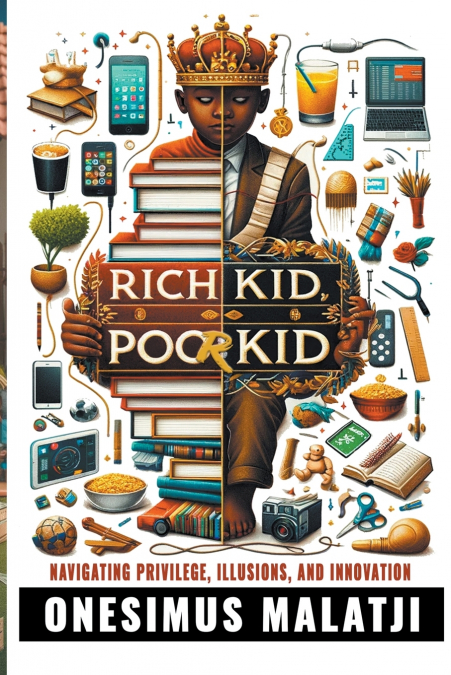
 Librería Perelló (Valencia)
Librería Perelló (Valencia)
 Librería Aciertas (Toledo)
Librería Aciertas (Toledo)
 El AlmaZen del Alquimista (Sevilla)
El AlmaZen del Alquimista (Sevilla)
 Librería Elías (Asturias)
Librería Elías (Asturias)
 Librería Kolima (Madrid)
Librería Kolima (Madrid)
 Donde los libros
Donde los libros
 Librería Proteo (Málaga)
Librería Proteo (Málaga)
In "Rich Kid, Poor Kid," readers are taken on a journey through the lives of two young individuals, one from a wealthy background and the other from a struggling economic environment. The novel is structured in a way that offers a deep dive into their parallel yet distinct worlds, highlighting the stark contrasts and unexpected similarities in their experiences.The first part of the book introduces the characters, setting the stage for an exploration of how their economic backgrounds impact their psychological development, relationships, and views on technology. As the story unfolds, the narrative delves into the digital divide, scrutinizing how technology can be a tool for empowerment or a source of inequality.Midway through the novel, the focus shifts to the allure of wealth and the mirage of social media success. It probes into the psychological dynamics surrounding money and the often misleading portrayal of affluence online, juxtaposing these against the real-life challenges and opportunities in the tech-driven world.The latter sections of the book are dedicated to overcoming adversity through innovation. Here, the characters find ways to leverage technology, regardless of their socioeconomic status, highlighting how ingenuity can thrive under constraints and how technology can serve as a catalyst for social change and personal growth.As the narrative nears its conclusion, it offers a forward-looking perspective on emerging technologies, ethical considerations, and the pivotal role of youth in shaping a responsible digital future. The story culminates with practical lessons on transforming challenges into opportunities, emphasizing the importance of education, mentorship, and proactive engagement with technology for societal betterment.Overall, "Rich Kid, Poor Kid" is a thought-provoking novel that blends storytelling with insightful commentary on modern challenges, aiming to inspire and educate readers about navigating life in an increasingly tech-centric world.